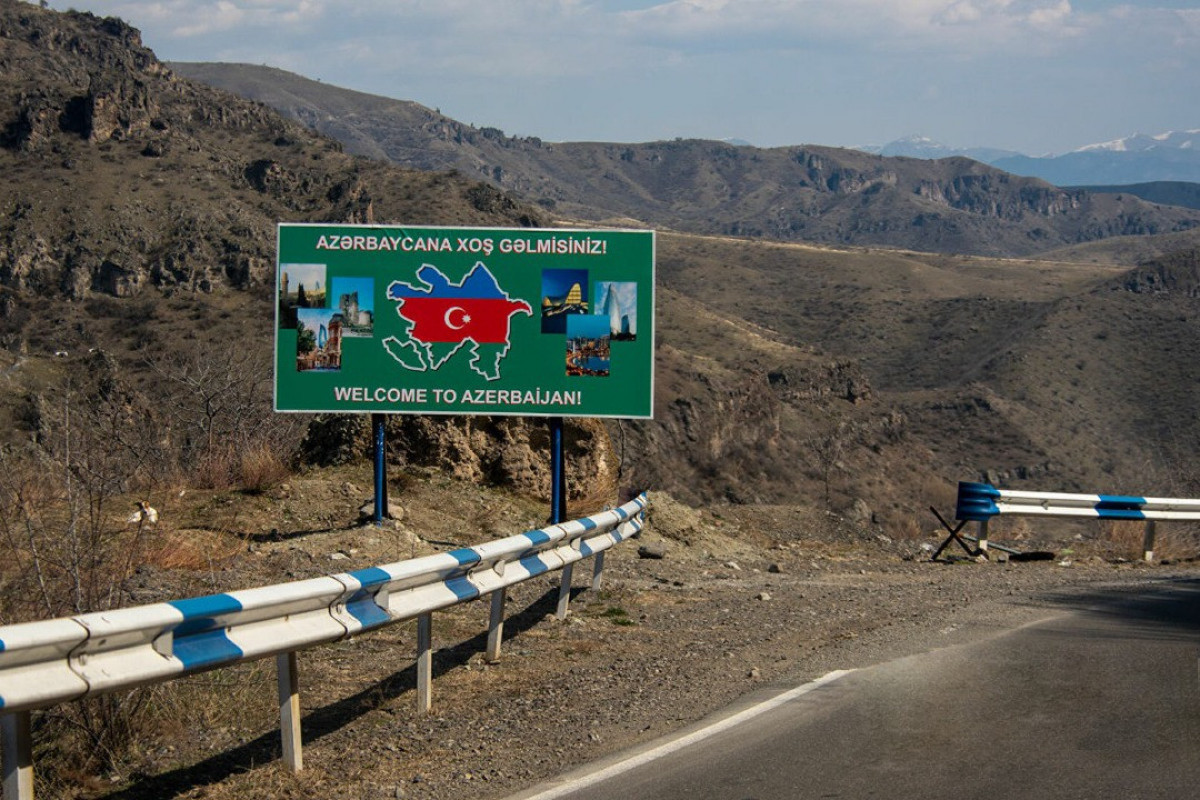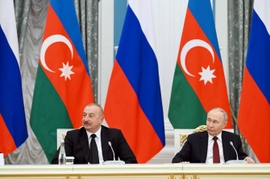Armenia’s Prime Minister Nikol Pashinyan came up with a belligerent attitude toward the efforts to unblock the transport communications in the South Caucasus, including the opening of the Zangazur corridor.
Pashinyan believes that Azerbaijan’s idea for implementing the corridor, which should connect Azerbaijan's mainland with its inseparable part of Nakhchivan and further with Turkey through modern-day Armenia’s territory, represents so-called “territorial ambitions” towards Armenia’s sovereignty.
“What does the Zangazur corridor or East Zangazur mean? Who comes up with these terms? We have stated and continue to declare - we will not discuss issues in corridor logic,” Pashinyan said in a Facebook live stream on Tuesday, according to a report by TASS.
According to Armenia’s prime minister, the term “corridor” used in the trilateral ceasefire statement signed between Armenia, Azerbaijan, and Russia last year refers only to the Lachin corridor and should not be attributed to the Zangazur corridor.
Zangazur historically was an Azerbaijani region that now forms the southern part of modern-day Armenia and a portion of the territory of Azerbaijan in the country’s Zangilan, Gubadli, Jabrayil, Lachin, and Kalbajar districts. Shortly after the Bolshevik forces subjugated the Azerbaijan Democratic Republic on April 28, 1920, a significant part of the Zangazur region was ceded to the newly-established Armenian Soviet Socialist Republic on November 30, 1920. As a result, Nakhchivan, which borders Zangazur, became an exclave separated from the Azerbaijani mainland.
Following the Soviet Union’s dissolution in 1991, Armenia launched a full-blown military aggression against Azerbaijan. The bloody war lasted until a ceasefire in 1994 and saw Armenia occupying 20 percent of Azerbaijan’s internationally recognized territories. Over 30,000 Azerbaijanis were killed, and one million were expelled from those lands in a brutal ethnic cleansing policy conducted by Armenia. As a result of the war between Armenia and Azerbaijan in the early 1990s, Nakhchivan became fully isolated from the Azerbaijani mainland after Armenia closed energy, electricity, and transport connections, including highways and railways to and from the region.
On September 27, 2020, the decades-old conflict took a violent turn after Armenia’s forces deployed in the occupied Azerbaijani lands shelled military positions and civilian settlements of Azerbaijan. During the counter-attack operations that lasted 44 days, Azerbaijani forces liberated over 300 settlements, including the cities of Jabrayil, Fuzuli, Zangilan, Gubadli, and Shusha, from nearly 30-year-long illegal Armenian occupation. The war ended in a tripartite statement signed on November 10 by Armenia, Azerbaijan, and Russia. Under the statement, Armenia also returned the occupied Aghdam, Kalbajar, and Lachin districts to Azerbaijan.
The liberation of Azerbaijan’s lands has opened up ample opportunities to reshape the regional economy, trade, and transportation.
The tripartite statement signed last year called for the implementation of various issues of regional significance, including the restoration of all economic and transport links. In addition, on January 11, 2021, Azerbaijan, Armenia, and Russia signed a statement in relation to the unblocking of all economic and transport communications in the region.
Government officials in Azerbaijan are convinced that such regional transportation projects, including the Zangazur corridor, could foster peace and cooperation and bring new opportunities.
According to some analysts, the corridor will not only restore the shortest connection between Azerbaijan’s mainland and the exclave of Nakhchivan but will also form an important link in the East-West and North-South transport corridors.
Turkey will be able to transport its goods to Central Asia by a shorter route. Moreover, Russian and Turkish railway grids will be interconnected with the opening of regional transport connections. Armenia will have a railway connection with Russia, which was interrupted in the war in Georgia’s Abkhazia region 30 years ago, and with Iran by connecting to Azerbaijan’s railway grid in Nakhchivan. This could help Tehran and Yerevan save up to $3 billion in the construction of a new railway. In addition, Chinese authorities have lauded the Zangazur corridor as a significant contributor to the implementation of Beijing’s multi-trillion-dollar Belt and Road Initiative.
However, Armenia’s Prime Minister Nikol Pashinyan and other top officials have been persistently rejecting negotiations on opening the corridor. PM Pashinyan had earlier said that the topic of the corridor was closed for Armenia.
Director of the Caucasus Institute, political scientist Alexander Iskandaryan said the Zangazur corridor issue was almost resolved, and the route would be opened despite opposition from the Armenian side.
“The Azerbaijanis will call it the corridor, the Armenians somehow differently - a route, a road, a path, I don’t know, the opening of communications. What we are talking about, with a large likelihood, I think, will take place, the basic problems have already been resolved. The pressure on Armenia in this sense is very serious and consolidated, from different sides,” he said in a recent interview.
In the meantime, Azerbaijan’s President Ilham Aliyev and PM Nikol Pashinyan will be discussing the agreements addressed in the trilateral statement with President Vladimir Putin in the Russian city of Sochi on November 26, 2020. Particular attention at the meeting will be paid to the unblocking and development of the regional trade, economic, and transport links, according to the Kremlin.







 The Mine Action Agency of Azerbaijan (ANAMA) reported on Thursday the discovery of a significant amount of explosives in the Khojavand district of ...
The Mine Action Agency of Azerbaijan (ANAMA) reported on Thursday the discovery of a significant amount of explosives in the Khojavand district of ...
 Iran’s Foreign Minister, Hossein Amir-Abdollahian, has labeled a foiled Israeli drone attack in certain parts of the country as a "failure" for Isr...
Iran’s Foreign Minister, Hossein Amir-Abdollahian, has labeled a foiled Israeli drone attack in certain parts of the country as a "failure" for Isr...
 Iran has refuted reports of alleged damage to Shimon Peres Negev Nuclear Research Centre located southeast of Dimona, Israel, during the recent air...
Iran has refuted reports of alleged damage to Shimon Peres Negev Nuclear Research Centre located southeast of Dimona, Israel, during the recent air...



